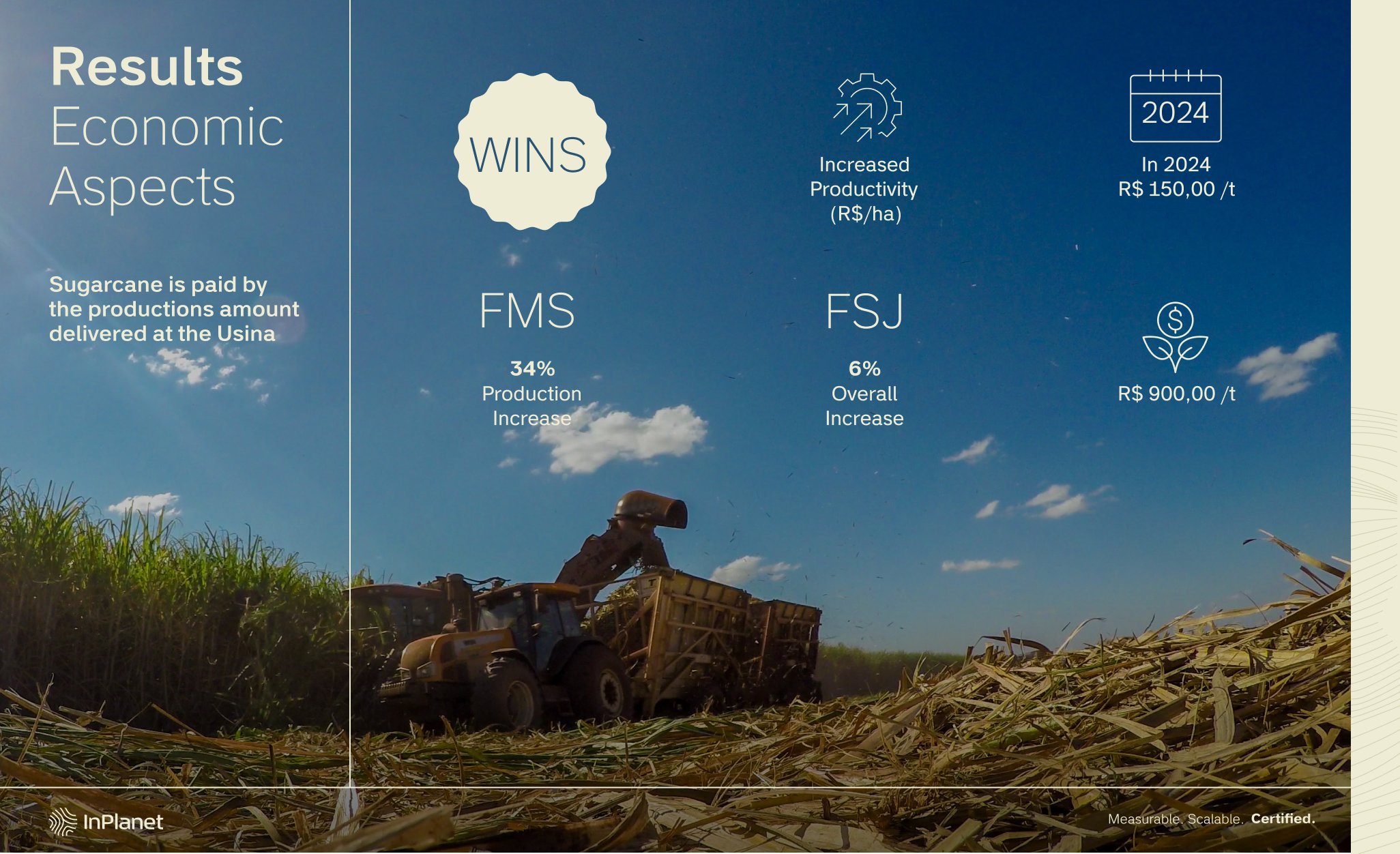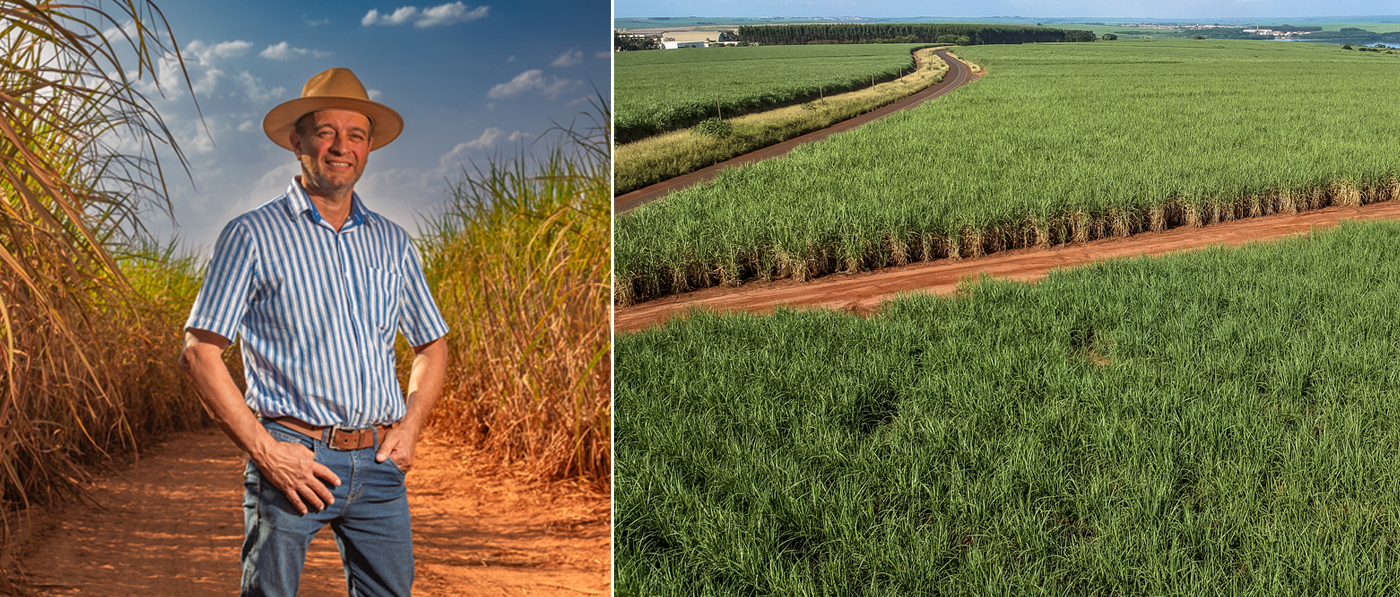Inflation and rising input costs have put increasing pressure on farmers worldwide. With fertilizer prices soaring and environmental concerns growing, many are seeking sustainable alternatives. Enhanced Rock Weathering (ERW) is emerging as a game-changing solution, offering a natural way to enrich soil, sustain high yields, and sequester carbon. By using this method, farmers can reduce fertilizer use and sequester carbon effectively.
At InPlanet, our team of scientists, including Dr. Philipp Swoboda (Impact and Science Lead), Dr. Marcelo Santoro (ERW Regional Manager), and Dr. Mayra Maniero Rodrigues (MRV Researcher), is at the forefront of ERW research. Through extensive field trials, we are demonstrating that farmers can significantly reduce fertilizer use while improving soil health and long-term profitability. This approach helps farmers reduce fertilizer use and sequester carbon in a sustainable way.

What is enhanced rock weathering (ERW)?
Enhanced Rock Weathering involves applying finely ground silicate rock, such as basalt, to agricultural fields. As the rock naturally breaks down, it releases essential nutrients like calcium, magnesium, phosphorus and potassium, improving soil fertility while capturing atmospheric CO₂.
Scientific studies and real-world applications confirm that ERW enhances microbial activity, strengthens soil structure, and increases moisture retention. Unlike synthetic fertilizers that offer a short-lived boost, ERW supplies nutrients gradually, ensuring long-term soil enrichment. Additionally, this process actively removes CO₂ from the atmosphere, making it a powerful tool in climate mitigation. By reducing dependency on expensive fertilizers, ERW also helps lower input costs while improving soil resilience and sequestering carbon.
Success story: first certified carbon credits for ERW
In January 2025, we at InPlanet, in collaboration with Isometric, achieved a major milestone: the issuance of the world’s first certified carbon credits for Enhanced Rock Weathering. These credits were generated from a project in São Paulo State, Brazil, where finely crushed basalt rock was applied to farmland. This accelerated natural carbon sequestration processes. The verification was conducted by Isometric and an independent third party, ensuring each credit represents one tonne of CO₂ durably removed from the atmosphere. This project clearly shows how farmers can reduce fertilizer use and sequester carbon simultaneously.

This milestone validates ERW as a scientifically rigorous and scalable method for carbon dioxide removal. It offers additional benefits such as improved soil health and increased agricultural productivity. ” As our MRV Lead, Dr. Mayra Maniero Rodrigues shares:
“We are the first to certify Enhanced Rock Weathering carbon credits, the first CDR company to spread rock powder in Brazil, and the first to capture carbon for over 1,000 years this way. Innovation isn’t just our mission; it’s our reality.”
Field trials demonstrated a six percent overall productivity increase. Some plots achieved up to thirty percent higher yields compared to control fields. Nutrient availability, particularly potassium and phosphorus, improved significantly. This reduced dependency on synthetic fertilizers. Financial projections suggest accumulated net profit increases of up to four figure Brazilian reais per hectare over five years. This helps farmers reduce fertilizer reliance and sequester carbon.
The future of sustainable farming with ERW
With fertilizer prices increasing and environmental regulations tightening, farmers need viable alternatives. These alternatives must maintain yields while lowering costs. Enhanced Rock Weathering is proving to be a transformative solution. It contributes to soil regeneration, cost reduction, and carbon sequestration. This shows how farmers can reduce fertilizer use and sequester carbon effectively.
ERW is supported by peer-reviewed scientific research and is gaining recognition from regulatory bodies and agricultural cooperatives. Farmers who implement ERW can benefit from ongoing studies and potential government incentives promoting sustainable farming. This support enables farmers to reduce fertilizer use and sequester carbon.
By reducing input costs and maintaining or increasing productivity, ERW presents a financially sound investment. Its ability to sequester CO₂ while improving soil health makes it an essential component of modern, sustainable agriculture. This allows farmers to reduce fertilizer use and sequester carbon.
As the industry transitions toward eco-friendly practices, ERW is emerging as an innovative and profitable approach. Research from InPlanet is helping farmers worldwide adopt this technique with confidence. It proves that reducing fertilizer use without sacrificing yield is possible and feasible while also sequestering carbon.
For farmers seeking a natural, cost-effective way to boost soil health and profitability, Enhanced Rock Weathering may be the solution they’ve been waiting for. It offers a way to reduce fertilizer use and sequester carbon simultaneously.